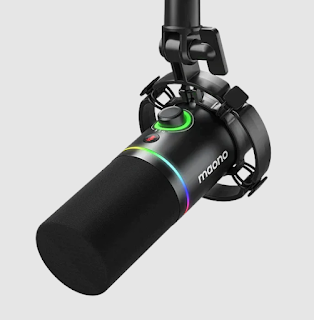Unveiling the Perfect Podcast Mic: Finding Your Voice in the World of Podcasting
Welcome to "Unveiling the
Perfect Podcast Mic," where we delve into the dynamic world of podcasting
and explore the crucial role that the right microphone plays in delivering
captivating content. Whether you're a seasoned podcaster or just starting, join
us on this audio journey to discover the key to recording success.
The Importance of Quality
Audio
In the realm of podcasting, audio
quality reigns supreme. A podcast
mic is your direct line
to your audience, shaping the way your voice and content are perceived.
Crystal-clear audio enhances listener engagement, retention, and overall
satisfaction. The right podcast mic minimizes background noise and captures
your unique vocal nuances, making your content more professional and enjoyable.
Types of Podcast Microphones
There's a diverse range of
podcast microphones catering to different preferences and recording
environments. USB microphones offer plug-and-play simplicity and are ideal for
beginners or those on a budget. XLR microphones, paired with an audio
interface, provide higher audio quality and more customization options, making
them popular among experienced podcasters. Consider your recording space,
budget, and desired audio quality when choosing between condenser and dynamic
microphones.
Choosing the Perfect Fit
Selecting the ideal podcast
microphone involves understanding your content and recording environment. If
you record in a controlled studio, a condenser microphone captures intricate
details, while a dynamic microphone suits noisy surroundings. For remote interviews,
invest in a microphone with excellent noise cancellation. Research user reviews
and seek recommendations from fellow podcasters to find a mic that aligns with
your unique needs.
Tips for Optimal Recording
Even the best microphone won't
deliver exceptional results without proper recording techniques. Invest in a
pop filter to reduce plosive sounds, and position the microphone at a
comfortable distance to avoid distortion. Maintain consistent mic placement for
uniform sound across episodes. Experiment with recording settings and editing
software to enhance your audio post-production. Regularly monitor and adjust
levels to ensure a balanced and professional sound.
Conclusion
Your podcast microphone is the
gateway to your listeners' hearts and minds. From USB to XLR, condenser to
dynamic, the options are vast, but the key lies in understanding your content
and recording environment. Armed with this knowledge, you're ready to embark on
your podcasting journey with confidence, capturing the essence of your voice
like never before.
For more info. visit us:


Comments
Post a Comment